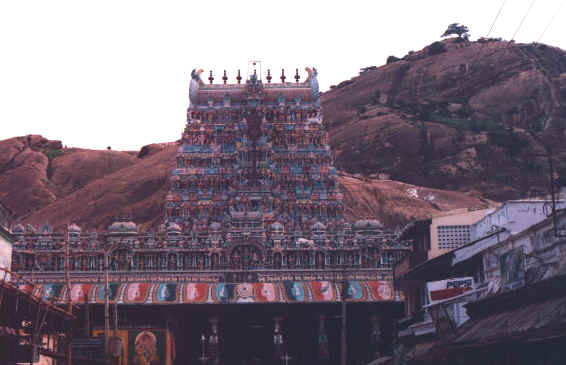Architecture
Entrance to the hill temple is through a mandapam
called the Aasthana Mandapam built by Tirumalai Nayakkar of Madurai lined with several artistic pillars. 48
pillars, each 20 feet in height bearing Yaalis, elephant, warrior bearing horses hunting
tigers etc. are seen in this mandapam. A 7 tiered Gopuram towering to a
height of 150 feet forms the entrance to the temple.

There is yet another mandapam refered to as the
Kalyana Mandapam to the left of which is the sacred tank Lakshmi
Theertham. A series of steps lead to the Kambattadi mandapam,
the Ardhamandapam and the Mahamandapam. There are few
more mandapams within the temple complex. Much of the structure of the temples was
developed by the Nayaks of Madurai.
The sculptural work in this temple is of great
beauty. Two panels depict the cosmic dance of Nataraja on one of the cave
temple walls. The cosmic dance portrayal shows several celestial beings in the orchestra
and in the audience admiring the dance of Shiva.
Several inscriptions from the Pandya Vijayanagar and the
Nayak periods are seen in this temple. There is also a tank called Saravanapoigai(
as in Palani) to the east of the temple lined with beautiful steps
against the imposing hill. In addition, there are caves with interesting sculptural work.

